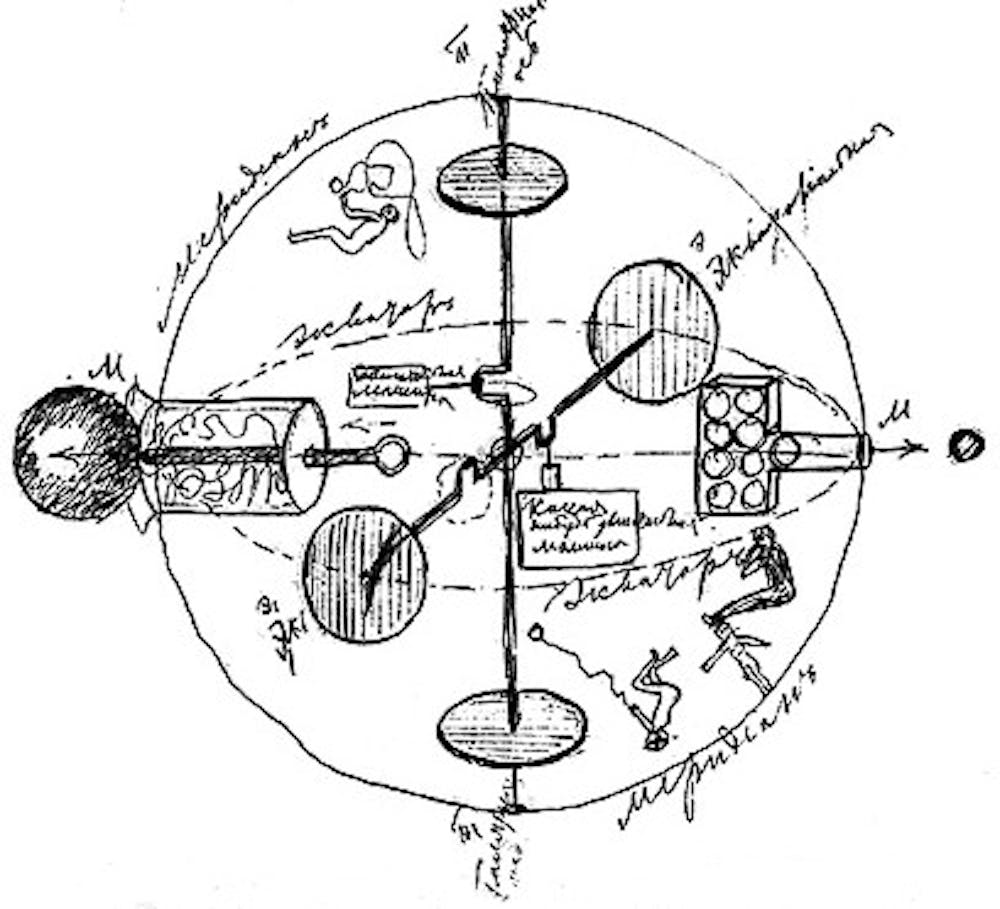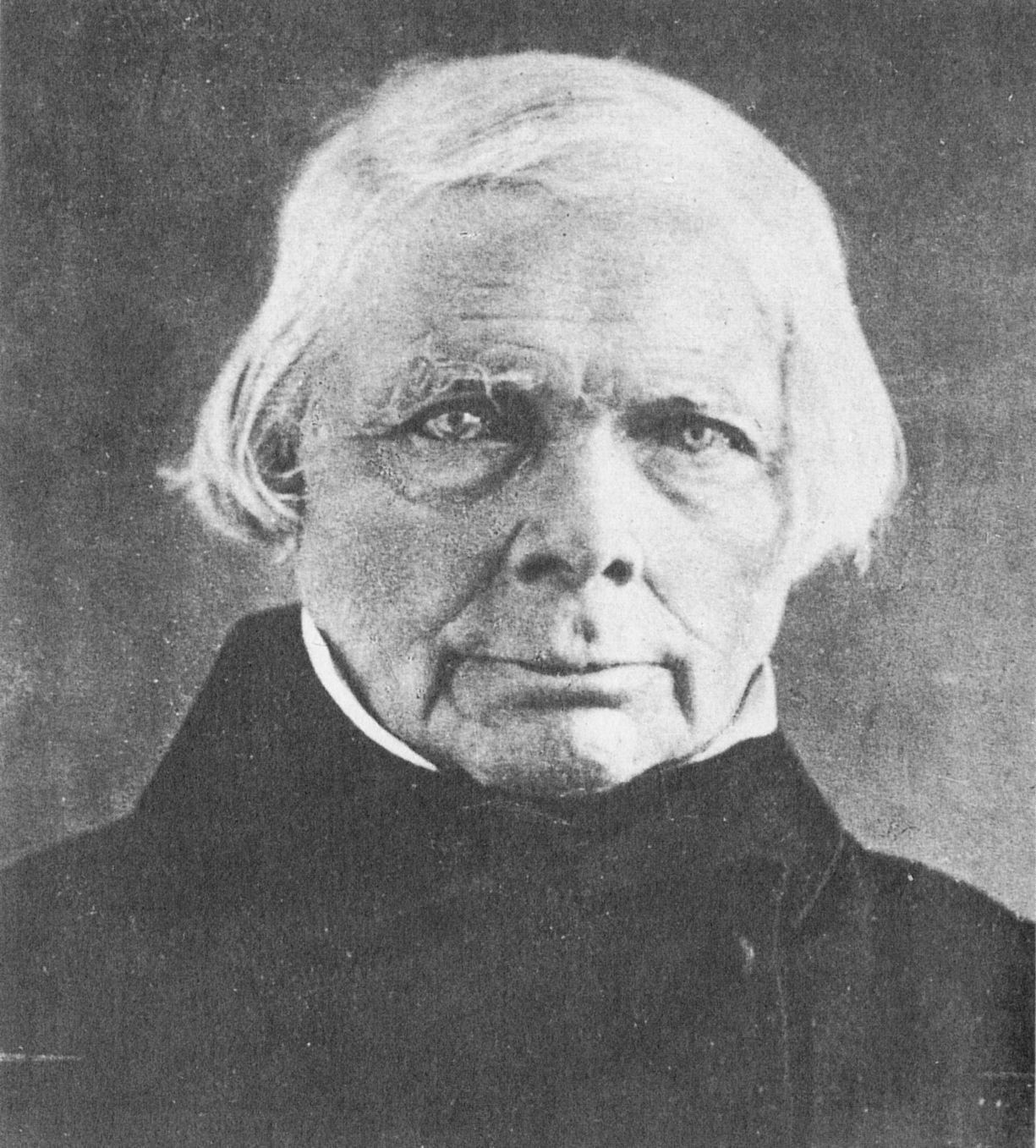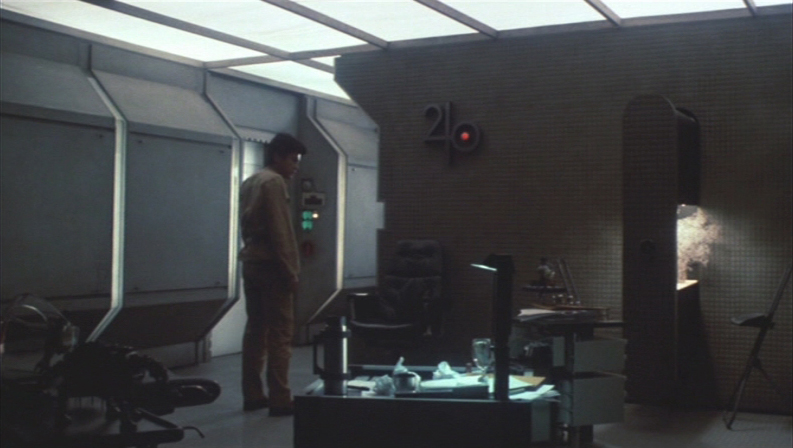Tag Archives: cosmism
1976 – Out of the Present (documentary by Andrei Ujică 1995)
Out of the Present is one of the most mind-boggling examples of documentary making (in my experience) to come out of what the Germans call “Wende”, the 1989 turn, or what in Romania is known as the – “tranzitie” – the protracted transition of the early 1990s after the Romanian Revolution. The Romanian 1989 Revolution is left as the only – brutal, bloody revolution. Yet we have another example maybe even more emblematic – because it had much more wider repercussions. The 1991 Soviet coup d’état attempt also known as the August coup – is often depicted as the fight btw the reformists and the old guard soviet apparatchiks, with the reformist faction run by Boris Eltsin winning. Well, the result was the total collapse of the Communist Party and the immediate collapse of the Soviet State. In fact, in retrospect, this could be read as actually the first important step in the shock therapy economic measures – that have afflicted Russia, but all the other countries of the east bloc as well – be it Romania, Bulgaria (maybe not so much Poland and the Baltic nation-states). Another exception is CPR – China being one of those rare, maybe only countries that got forewarned and beforehand refused any structural liberalization of its core industries preferring instead a gradual liberalization from the margins, a dual pricing system and many other things which none of the previous examples followed (including Romania and Russia). In fact one can say that without first the annihilation of the party and the state, all the other – price liberalization etc privatization of industries, even the rise of the oligarchs and Putin – would have not been possible.
Andrei Ujică is one of the most accurate analyzers of mediatic sociological political mutations – and he helped Harun Farocki make the Videograms of a Revolution documentary in 1992 practically the best documentation we have about the first televised revolution – about the various framings, affective overflow and post-spectacle operations taking place on TV, with actual theatre actors becoming revolutionaries and so on. They were both digging into hours and hours of TV materials to be able to offer this comprehensive study of broadcasted images and audio-visualization of politics.
Out of Present is something else – it presents the Soviet Cosmonaut Sergei Krikalev leaving Earth and CCCP for a space mission on MIR to return and reenter Earth in a new country called Russia. It is for me one of the most stark example of space dilation that does not take just its relativistic time consequences to their limit but also the subjective experience of somebody who is caught on orbit, who is dependent on a sort of terrestrial life support system that was on the verge of collapse, an infrastructure that brought Gagarin first in orbit, the first human to leave terrestrial space. It spans the entire collapse of the Soviet Union but from a cosmic perspective of sorts and during the routine of one of the most enduring dreams of humanity, the one that links communism with the exploration of outer space. There is much to be teased out of this documentary so I leave it up to the viewers. This documentary was included in the New Temporealities show at the Scena 9 BRD residency in Bucharest this year. Below is my text on it – for the room 7 of the exhibition where the movie was screened.
07 Out of the Present into Space
What happens when time plays tricks on you up there, when you rely on and depend on once-functioning life support systems, guided systems that put the first humans in orbit around the Earth? What happens when you depend more than ever on a space exploration infrastructure that sent you there, but which for the moment remains suspended? Abandonment is the occasion to get out of a continuous present, dislocated from that home that is no longer on Earth, the place where even the system that sent you towards the stars will soon cease to exist.
This portal, which measures the drift out of time and into unknown space, is discontinuous. Just as time becomes difficult to measure, suddenly there is a place where worlds are suspended, and far too quickly destructured and atomized. Many SF comics and cover artists felt the need to abandon drawing when they encountered the prowess of CGI post-production, because they felt 3D modeling was already fulfilling their purpose, delimiting all possible actions in advance.
The exit from the present takes place when everything is spatialized, leaving room for movement through the frozen time of others, even through the unimaginable speed of some spaceships flying over a fiery exoplanetary landscape far from here and now. Entering in instantaneous and short-term memory, images are no longer subjected to linear succession. The fast pursuit is no longer a pursuit but a suspension in between. It’s ready to happen, and yet it doesn’t happen.
1861 – Utopia in Babelsberg – Science Fiction from the DDR (2021 documentary by DEFA)
timespace coordinates: somewhere in the East Germany 1960s 1970s 1980s
Somehow I cannot embed the link so here it is (sadly only in German! and only available till 11.05.2022 ∙ 23:59). Many thanks to Julia Linda Schulze for catching on with this documentary and keeping us in the loop with it!
//This is, without question, one of the best documentaries I have seen about the context, ideals and cinematography surrounding East bloc, ex-Socialist SF. Maybe this is again a demonstration as why it is such a niche thing and why most of the older SF movies do not getting enough of an exposure and why it is easy to get stuck with images of mostly US, English-language movies from the same period (mainly space-age 1960s and 1970s). There is lots of interviewed researchers including film directors, special effects contributors, script writers, set designers, costume makers as well as SF historians, SF writers, art curators etc from current Germany that dwell on the retro-futuristic, the ideological engagements of the DDR period and the general openness towards a better and definitely more Internationalist and Pacifist, non-militarist future. The usual triumphalist scientist vision of unlimited growth and untrammeled progress that hounded so much of the Soviet planning is not really prominent, there is more questions and warnings as well as usual problems carried along in space. A few ideas first of what struck me when watching it. If you want to know more and see a few screen captures I made, here’s my take on it with the TW thread like rabbit hole into various related directions.//
Cosmonaut in the front is played by legendary Serbian actor Gojko Mitic that is known as the East German Winnetou in the Karl May Easterns (Ostern), as well as for his cosmonaut in 1970 DEFA studios Signale – Ein Weltraumabenteuer (Signals: A Space Adventure):
- Although there is a lot of aesthetic appetite for the retro futuristic Former East, its communist monumental art, brutalism and mosaics, there are very few detailed popular accounts about how pop cult was the future or space exploration during the Cold War. In retrospect, we are left with an openly nostalgic (Ostalgie – how it is called somehow disparagingly in Germany) feeling, as well as a lot of, I guess, normal misunderstandings about a period mostly labeled as a broken dystopia, a period of cultural creative and artistic censorship. In the eyes of the aggressively individualistic and ‘free speech’, a transgressive present, it all seems uber-controlled, stiffing, with education and history suffering from propaganda, party and state- induced inaccuracies and biases. It is really to fixate on Stasi terror Cold War or ’empty idealism’ since there really existed a repressive state surveillance, human rights abuses etc These of course existed and nobody needs to deny them. Cringe is ok, even ridiculing, but then nihilism and cynicism are at the order at the day every day. It is harder and harder to entertain any kind of ideals, other than ‘futurism’ or singularity as dictated corporate leaders (Elon Musk or Bezos entrepreneur ‘genius’ types) CEOs and their overbearing visions of how the future should be shaped and in who’s image. Promethean – ‘besting and bending nature’ to our will is clearly not the way, yet common will and reason must still have to weigh in if we are to somehow mitigate what mostly Western ‘growth’ has already done to the planet. Thus, under critical and trying times, it is becomes hard to acknowledge there was a playful side, a dreamy side and one that considered cooperation and pacifism as the precondition for space exploration, or avoiding the worst of the worst here on Earth. Visions of the East bloc Utopia are not a bloc, and are naive in any way, they are informed by a certain scientifically-informed outlook, of changing emotions and hopes in regard to the progressive fragility of modern human civilization as a whole, at a particular juncture, a difficult turning point characterized by that very modern separation of the ‘space of experience’ from the ‘horizon of expectation’ (highlighted in the work of German historian of Enlightenment and Modernity Reinhart Koselleck, especially his Futures Past). Our whole collective experience as an entire species, one might say of humanity as a whole, has not prepared us for what is around the corner, the existential risks around the next bend. This might mean unprecedented space exploration, material improvements, a more egalitarian space living, unusual and unsuspected medical & technological amenities, as well as the incredible and unprecedented material and ecological threats, that none of our ancestors experiences or current experiences can prep us for what’s coming. These split, the split between the lived and accumulated experience of previous generation and what lies ahead was particularly prominent in the XX East bloc, ex-Socialist, ex-Communist -call them what u want countries and political systems. This dissociation of the future from both present and the past – has, I think also characterized and formed these anxieties and hopes that animate and infuse these East German movies.
- While the above cannot be ruled out, there is the exactly opposite feeling that experience, however slight and remote, back here on earth, can somehow introduce us to somehow that is beyond immediate reach, transforming us here on earth trough mutual communal play. That we, as communal playful primates can practice and the enjoy is essential in a period of tremendous technological & scientific changes. This happens whenever we have to face the future together. Yes technological and scientific overdrive – was popular in Soviet east, heavy ‘Taylorist’ industrialization started with Lenin, Chernobyl events immediately followed suit, catching up with the West and war against nature made sure the collapse came earlier than planned, but ecological and environmental (as well as what we would call X-Risk) thinking was also making strides. Especially during the long 1980s, the last gasp of those divergent regimes was reworked and visible in SF bookd amd movies. Some Socialist SF movies already started showing the dirty side of things, moving away from the totalizing ‘Star Trek’ futures, acknowledging there is pollution, there’s a visible tear & wear of progress and technological betterment, and the fact that the post-apocalyptic times or xenoplanetary worlds might be quite un-heroic, with ego-maniacal rulers, neo colobialism, and various forms of slavery, racism and sexism still very much alive. Even as a space faring civilisation you still had to recharge a spaceship’s hyperdrive from (sic!) – proto-technological remains such as a pair or phosphorus smeared matchsticks (like in Soviet Kin-Dza-Dza 1986). This planetary future was to be experienced, not just dreamed or read about in SF books, and one that cannot be faced as nations nor as corporate entities, not even as people or as a single species, nor race, gender, sex, origin and birth – should be made a priority. This universalist call it what u want – program, grand plan, vision, dream, etc has been a motor for a lot of very unlikely cosmic visions, from the Pioneer playgrounds, school visits, children’s books, TV programs etc. This was a practice foremost – of imaginary exercises in schools, during classes, in kindergartens, when one had to write and think in terms of the year 2000, write an essay about what one would do or one’s children would do in that incoming future! Everything was suffused (at certain periods more than others for sure) with the livable qualities of this kind of starry eye program, the idea that you can participate via present into a future. That you or your group of school friends are some small part of something much more grandiose that makes even the usually drab, scarcity prone and usually defective Socialist present livable. It was almost the runaway- dreaming of the weirdo Russian cosmists (Tsyolkovsky, Fyodorov etc) and shameless avantgarde lofty ideals but turned into something more humble, more terrestrial, (DIT) DoItTogether in a way that was not deffered (no waiting!), but constantly living it and experiencing it in the Now. There is a lot of nostalgia industry nowadays, although noirish 1940 nostalgia adds a different layering to – and makes retrowave cyberpunk post-Marxist itself divergent, diverging further more from a complacent belief in unlimited progress as such. Marvel is peddling tons of nostalgia, just thinking about WW84 or Once Upon A Time in Hollywood, yet calls about “retrofuturism” obscure the fact that what we are properly speaking about is not a nostalgia about something gone, something used up, but for the future – of valuing not just what was or is, but what could have been; those unrealized (maybe even more and more unachievable at the present moment) potentialities that coexist and suffuse what has happened or happening. What they lacked in action, plotline or even cerebrality, or the usual Kaboom competitive strife & big Star Wars fireworks, these Eastern SF flicks provided a vague, general background, a substrate on which a programmatically (much too rosy &) hopeful, universalist (in spite of everything – colonialism, imperialism, racism, instrumental reason, carbon ideology, patriarchy etc) belief that one can skip exotic bananas (as one of the SF writers in the movie reminisces), in order to entertain the possibility of contributing to exoplanetary adventures. At the same time, this strain of SF was not good at dealing with the past, especially the East German past during the WWII, or the way a recent past as much as an older past still lingers or may affect present outcomes and futural imaginings. Still, what Utopia in Babelsberg Studios manages to evaluate or value is that is is possible to approach such imaginings without fetishizing them. We are mostly thinking about Hollywood as the preeminent dream machine, even now in the rise of China Hollywoods seem to bend and become reinvested in the Chinese Dream. This makes me(and probably others) curious, since, like Frankfurter School cultural pessimism always maintained, Hollywood is too much real and not very much dreaming. It was never about dreaming, but about repeatedly selling the same waking nightmares or recycled capitalist tropes as realities in the form of dreams.
1768 – Cosmic Station (director: Bettina Timm, documentary 2008)

Byurakan Astrophysical Observatory official
Viktor Ambartsumian Armenian-Soviet scientist founder of the Byurakan Observatory
Synopsis Mount Aragaz is the highest mountain in Armenia. At an altitude of 3500 m one can find the remnants of a prestige project of the Soviet Union: the weather beaten buildings of Aragats Cosmic Ray Division. Here, more than a hundred men used to search for messengers from distant galaxies – particles, created by cosmic radiation on its way to earth in billions of tiny explosions. Most of the researchers left, when the financial support of the institution collapsed with the Soviet Union. However, despite the lack of funding a small group of Armenian scientists endures on the top of Mount Aragaz. Like astronauts in a spaceship they continue their research, hoping for a sensation: The discovery of unknown galaxies.
Statement
The Universe, the Nothingness, the Solitude – three scientists are holding out at what was once the Soviet Union’s greatest cosmic research station. Are they closer to the secret of Creation – here, on top of Armenia’s highest mountain? In their work they rather look like Sisyphus’ brothers, and it is not by accident that they start searching for the meaning of their existence, of God’s existence. Man asks, and the World does not reply. Or does it?
DURATION: 30 min
FORMAT: 35 mm / Farbe / 1:1,85 / DolbySR
LANGUAGE: armenian / german and english subtitles (optional)
PRODUCTION: Pelle Film in Ko-Produktion mit der HFF München und dem Bayerischen Rundfunk
Armenia’s Cosmic-Ray Catchers 2020 article
‘We’re Above Civilization’: life in a cosmic-ray station photo essay






<<974
1690 – X-Risk: How Humanity Discovered Its Own Extinction by Thomas Moynihan (2020 book)

Forthcoming book with MIT Press & Urbanomic. Buy here.
more texts by Thomas Moynihan
I got a free copy of this book for an honest review. I already had the occasion to read a few related articles and essays by Thomas Moynihan in sumrevija.si and Palladium Mag. This review expands on those early first observations. Only later have I found out how they fit into a book of a much grander scope.
Its purpose is none other than redefining modernity and even reason as reason to ensure that thinking will not cease to exist in the future. All this in the light of something that has never before dawned on human minds: that the universe can well do without those very minds. One risks being overlooked when arriving on the crest of such an expanding body of collapse studies or end of the world as “growth industry”(Claire Colebrook), with scientists moving the Doomsday Clock closer to Midnight and ongoing “slow violence”(Rob Nixon) of 6th mass extinction blending into nearly omnipresent barrage of media apocalypticism. Yet, I believe X-Risk cuts like no other trough all of the recent secular/post-secular eschatological confusions, separating the threat of exterminism from prepper talk. Once and for all witnessing the end of one’s (or another’s) world is not the same as experiencing extinction nor is it establishing a presumptive final date of expiration. Thomas Moynihan’s book should be able to dispel all the lingering hesitation about what Big Filters to chose from (take ur pick from gray goo nano planetary meltdown to superintelligent AIs using our entire biomass as computronium fodder) by inviting us to step down from the giants upon whose shoulders we supposedly stand, and get a frisson as they succumb to ‘infinitarian paralysis’ (Nick Bostrom quoted by TM) and kamikaze theories about biospheres and entire worlds that keep on bursting like soda bubbles.

Clearly this book was written by someone who enjoys collecting all these ruinous and delightfully abhorrent mental cataclysms, a necessary feat at the very moment when we might desperately cling to old certitudes in the throes of apocalyptic theology, in spite of the daily facts that remind us that we’ve jumped off the cliff a while ago. Here comes a 21st c historical perspective on the long XX century of dreaming up wild galactic-scale visions about the present via the far future and across cosmic silences, not ignoring both the divergences and the ongoing dialogue btw Mutually Assured Destructive partners, a worthwhile recuperative effort especially in light of recent New Cold War fears.

With a strong impetus from the cosmist undercurrent (what Zizek used to call the “biocosmist heresy”) the Former East or ex-Soviet Bloc futurological contributions from ‘actually existing socialism’ that previously got short writ, astronomers Nikolai Kardashev and Iosif Shklovsky finally get their due. I don’t want to give the false impression this book is just a collection of daring visions and whimsical cosmological fallacies – it accomplishes the prodigious feat of channeling all these disparate resources about endangered futures trough the lens of rapidly expanding (since ~mid 90s explosion) astrobiological (or xenobiological as it was called) exoplanetary knowledge. The conceptual break criss-crossing a historical (diachronic) backdrop rich in brazen technological solutions and initial responses to ever more darkly looming existential threats – takes us to precedents and first inklings of the idea that there might be something deeply wrong with entrusting the universe the mission to bring us back once we disappear. While examplflifying this novelty, X-Risk nevertheless eagerly recognizes the pioneering work of Milan M. Ćirković, Toby Ord, Anders Sandberg, Nick Bostrom and Sir Martin Rees that contributed to the establishment of a new academic discipline. At the same time, there is so much more to be said about a wider search of Non-Western forecasting institutions and X-Risks mediation with examples from the Global South let’s say, or Chinese Society for Futures Studies (CSFS) established in 1979 China with the role of “to serve the long-term planning and the modernization construction of the country, and to serve the progress of mankind.” or 1970s Romania’s Laboratory for Prospective Research (later CIMSVD Institute) and their Tofflerian romances.
Numerous mini chapters with memorable titles like “Bubbles of Cosmic Nonchalance”, “Eternalism and Its Discontents”, “Worst of All Possible Worlds”, “Tadpole Hedonists and Fatal Flower-Arrangers”, “Shitting on the Morning Star or the Uses and Abuses of History” remind me that we should cherish all the thinkers that know how to tickle the hyper-modulated nerve of maximally distracted 21st reading. Clearly one of the best ways to do it – is to zoom-in on hopelessly (till now) and shamefully lost metaphysical constructions (Stanislaw Lem once called upon the singular powers of Sci-Fi to peddle such disreputable – but oh so intriguing metaphysical beasts). X-Risk is full with the decadent splendor of abstruse, smothered in their cradle natural philosophies, full of enormities with blusterous cosmic (and comic) reach.

Adjoining are excellent B&W images peppering the text from a draft of dela Beche ‘Awful Changes’ with Professor Icthyosaurus lecturing the necrofauna, woodcuts of Tambora’s eruption provoking the Year Without a Summer and unwittingly creating the perfect conditions for Mary Shelley to write Frankenstein; or, The Modern Prometheus at Diodati Villa on the shores of Lake Geneva, including some well-chosen portraits of Eduard von Hartmann (“looking omnicidal”) and F.W.J. Schelling (“in his old age and cosmic wisdom”) or biologist Oka Asajirō (“considering omnicidal degeneration, decadence, and debauchery”).

Whatever we might still think about giants of Continental philosophy (with either waning extinctionist credentials or pretty shaky perennialist positions), their Appetite For Destruction seems to have been fed by a very tenacious metaphysical Principle – the undead Principle of Plenitude. Years ago i read a fresh Romanian translation of The Great Chain of Being: Study of an Idea (1936) by Arthur Oncken Lovejoy, where the Principle of Plenitude gets ample exposition.

This and Alexandre Koyre’s From the Closed World to the Infinite Universe (1957) potentially changed our understanding of how such cosmic modelling and reordering got us to where we are now. The Great Chain of Being is one of those books that will never let any figureheads of Scientific, Literary and Philosophical canon rest in peace. It unwinds the living history of Scala Naturae, patiently uncovering the seams that bound innumerable taxonomical schemes almost till Linnaeus or Darwin & Wallace, the glue that kept everything in place in grand preordained hierarchies.

X-Risk newness consist in striking a definitive last blow at this chain constricting the way Life on Earth and the supralunar realms were imagined under the grip of Plenitude, finally to be ruined after the idea of extinction had sunk in. X-Risk widens the non sequiturs and gaps of the eternalist principle of Plentitude, or the endurance of value in a universe that appeared biased in our favor (take ur pick: Weak or Strong Anthropic Principle) as much part of philosophical and theological clusters as for Leibniz’s theodicy, under-girding his whole “best of the best worlds” on the same inherent overestimation and smugness about ultimate default safety nets. One may wonder if – Schumpeter’s gale – schöpferische Zerstörung or creative destruction that animates capitalism blows hard on the same wind of teleologic justification for destruction and ensuing cosmic renewal that made J. G. Fichte remark “All death in nature is birth, and precisely in dying does the augmentation of life visibly appear”(The Vocation of Man – quoted by T Moynihan).

While Whitehead is not present in any visible way, I somehow felt his mathematical approach to philosophical aporias useful in this altogether different context. In the unsuspecting way he discovers an age-old problem while rotating certitudes around almost like a Rubik cube, unceremoniously fitting parts that have been kept apart since ages, lightly addressing hampering axioms that constrain all subsequent chains of reasoning or their given solutions, restricting all flights of speculative endeavor. He does not try to eliminate or weed out the audacious brambles and thickets of reason. X-Risk also finds immense scope in detailing and following up on all the consequences of setting these finitudes free, in order to establishing what grounding beliefs subtend and unite all thinkers, no matter their school, language, methods or their particular apocalyptic flavor. What Thomas Moynihan in both rich detail and systematic search brings forth example after illuminating and frankly hilarious example from the most quirky, whimsical to the brightest of feverish minds – is their nearly complete naivete in regard to humanity’s cosmic no-rerun show. Up to a certain point, nobody seems to get that once they are out they are out. It is really gloriously and darkly funny to try and go back to the Encyclopedistes, or to the most pre-critical Philosophers as well as later SETI searches for humanoid aliens and see why so much of this intellectual bravado went so wonderfully askew. Only Marquis de Sade stands apace – but here he is on its own in many ways as he actively promotes extinction. This might also partially explain why reactions to the actual disappearance of the Dodo species (and others) in Mauritius or why Dodo-populated planets seemed possible to Bernard de Fontenelle (in retrospect), or why the dramatic realization of ultimate extinction came so late (possible clue: the Plurality of World aka Multiverse – Many Worlds theory sadly also fails the sensitivity-to-extinction litmus test).

This brings me to a possible consequence of this book imho – the way it counters the sort of abundance craze – Plenitude – as an expression of ontological excess, an ontology that seems to stumble on examples of non-experience or absence, or tends to avoid what might be called the wasteland of missing ‘windows of opportunity’ or singular encounters. An unrecognized dearth that might isolate such abundance on ‘lucky’ rafts drifting the void of space or forever lost in the gulfs between ‘island universes’. In some way Plenitude tangles as well with Cornucopian versions of ecological or eco-critical thinking. A cornucopian might have the same obliviousness to man-made disasters or to how everything runs its course if left alone (ex: neo-Malthusian COVID herd immunity or man-made conflicts that seem to help nature replenish itself). Thus, the faltering and lazy logic of non-interventionism runs amok and abstains specifically when worst comes to worst. What seems to be an increasingly growing problem of our times, not only disarray and suspicion about what is to be done, is a retreat from directed collective action coupled with nonchalant stand-back attitude. One cannot fully abandon excess – since austerity seems to be allied with the worst of capitalism nowadays, imposing all manners of punishing restrictions and well-targeted scarcity on those who anyway feel the brunt of a very bad deal. Technological post-scaricity Pays de Cockaygne’s is far indeed almost because it felt possible to the most prosperous and wasteful boomer generation, children of plenty and man-made extinction (mostly atomic) fears. It is easy to trumpet austerity on a planet where waste-disposal is being rerouted to second or third world and efficiency has become ever pressing and depressing. Before recognizing extinction as a fact of history and evolution, past or future, as this baroque abundance of literary, scientific and philosophical examples makes clear, it became a sheer impossibility to see something else besides basically bursting, agglomerated, populous celestial spheres.
If this cornucopian view of ‘nature’ (here terrestrial thus inclusive of humans) where all new continents and all worlds & all planets are as full as the old rivers, fields or standing forests becomes a thing of the past, even at fault for being completely exploitative, genocidal and predatory, what lies at the other end? Future Orchidelirium might not be such a bad habit after all, only and only if it does not become a botanical hunter’s dream bioprospecting after the rare and valued. Otherwise ‘Herschel’s Garden’ might resemble the good old lawns. Embracing full artificiality and artistry we might still learn from pop cultural ET galactic horticulturalists as Ralo Mayer already explored in his E.T.E. Extra-Terrestrial Ecologies performance lecture. With the waning of plentiful plenitude and strategically retreating from it, even if unaffected by extinction ideas and the radical realization of irreversible disappearance – extreme environments and desert communities where the anorganic was abundant (sun and sand in the excess) also birthed say Dune’s Fremen, the Albertian Order of St. Leibowitz, crypto-communist Essenes or mothers of the desert or fathers of the wasteland in the Eastern cenobitic tradition (with whom at least presumably we could exchange apocalyptic or messianic pleasantries) could help along by entertaining ideas of infertility, of absence, of no return and a growing emptiness that resonates far better with the vast expanse of suddenly available exoplanetary (external ‘nature’ unaffected by humans) desolation.
A clearly applied and directed Pessimism is essential nowadays for any collective, distributed & planned action to take place. Scientifically grounded 21st c Pessimism has somehow remade itself and at the same time remade the entire cannon of Western thought by emboldening us to abandon all complacent thoughts about unswerving teleology insuring reserved-seats for the human species in this universe, while never abandoning the need to secure its further existence. The mind- argument, the rarity and preservation of so-called “sophonts”, of reason endowed entities as threatened species in a mindless (or valueless) universe is one of the strongest arguments of why we should try and change course and think about securing the chance of future generations to exist and prosper (X-Risk being a staunch supporter of Enlightenment values and universality if fragility of reason). Panpsychism or cosmopsychism etc as understood and popularized noways (by Philip Goff for one in his Galileo’s Error: Foundations for a New Science of Consciousnesses 2019) elaborates on a parallel history of “what matter is in contrast to what it does” – an alternative entertained by Bertrand Russell and Arthur Eddington, arriving at quite opposite conclusions to extinction thinking from what I gather. I am on very thin ice here – but I wonder how consciousnesses and experience as the medium of reality itself squares out with extinctionism at this very precise historical juncture. As such, any extended, immanent non-human consciousnesses inherent at completely different scales (gradients, levels, degrees, substrates of organization etc) – might be also confronted with this ultimate task i.e. having to probe its foreseeable disappearance and thinning out further ahead.
After reading X-Risk, one may finally breathe again relieved because one is not left to suck in another of the private an frankly boring musings and philanthropic escape plans of company founders attending to their favorite Sci-Fi fears (Superintelligences transforming everyone into Paperclips etc), that seem to ignore and completely circumvent the bountiful historical examples of past and present – of extinctions that go on without a bang, of non-spectacular threats no less important to human and more-than-human existence here on planet Earth (divestment from fossil fuels or the present retreat from long-term planning in spite of Green New Deal and Extinction Rebellion).
1542 – Bye Bye Jupiter aka Sayonara Jupiter (1984)
spacetime coordinates: year 2125, Earth’s population has swollen to 15 billion with a further 5 billion outer space settlers spread throughout the solar system, including Mars and satellites of Jupiter.
Director: Koji Hashimoto & Sakyo Komatsu
Year: 1984

Minoru Sakyo Komatsu (小松 左京) is one of Japan’s trio of famous Japanese sci-fi greats together with Shin’ichi Hoshi and Yasutaka Tsutsui. Komatsu’s involvement with the 1970 Japan World Exhibition in Osaka makes him intimately linked to what came to be known as the ‘Japanese wonder’, the signature architecture and ideas of an era brimming with the optimism of bubble economy 80s, probably the most prosperous and carefree period in Japan’s modern history.
At the same time he is also linked to some of the most enduring traumas of Japanese sci-fi, the birth of a specific 70s disaster cinema(including Virus: The Day of Destruction), following the long tail of atomic bomb afterglow into cold war apocalypticism and what came to be seen as Akira hubris. Komatsu was a key player of the 1970s return to catastrophic imaginings of the future (in parallel with contemporary 1971 oil crisis, Watergate, the end of international golden standard, end of the wars of ‘national liberation’ and traditional communism etc). His best-seller, translated into many languages (including German) was Japan Sinks (1973) where Geotrauma is unleashed as a series of volcanic eruptions, rescue plans and earthquakes that brake up, inundate and transform the entire island nation into refugeesmmigrating to Korea, China, Soviet Union and the US. Japan Sinks brings the archipelago in touch with a tectonic plate ‘structures of feelings’ that questions all certitudes and difficulties of planing ahead of a major catastrophe. It was filmed as Tidal Wave in 1973 and in our own catastrophic-pandemic 2020 there is a new anime adaptation advertised by Netflix Japan in collaboration with Science Saru studios.
Sayonara Jupiter I could trace only in its German dubbed version, a delightful 80s artefact on its own. Based on the 1983 book by Sakyo Komatsu, Sayonara Jupiter offers a unique extra planetary outlook, probably only comparable to the recent Chinese Taikonautic blockbuster The Wandering Earth, based on Liu Cixin’s book. In its scope and enormity of its consequences it makes painfully clear that there is a mismatch with a Western imagination that largely gave up on regarding space as the ultimate destiny of humanity. Even former space race dreams pale when compared with these daring feats of Belt & Road exoplanetary geoengineering.



Prometheic terraforming gets introduces early on – humanity approaching an almost pre- Dyson Sphere initiative, right there on the Kardashev scale called ‘JS – Jupiter Solarization’ project) disclosing a galactic pupose that in turn necessitates the introduction of an alien encounter as well an absolutely credible nemesis: future extraterrestrial eco- terrorist cults. IMHO this vision is matched only by celebrated 1972 Douglas Trumbull debut Silent Running of biospheric drift & robotic gardening. Its technological sublime knows no bounds and so expect lots of wonderful TOHO studios mecha props, gigantic (physical!) spaceship models, upside down moving geisha extras in space stations, all propped up by a grandiose futuristic shamelessness and cosmic naivité. It is really hard to classify this as foolish overreach, cautionary tale, humanistic futurism or as dabbling with truly important questions regarding both planet- destroying capacities & planet – preserving/sustaining potential of future technology.

Now to get to the showdown of the movie: Chief Engineer Eiji Honda onboard Jupiter-orbiting Minerva Station as head of the JS Jupiter Solarization project team is confronted by a international group of protesters(later to be radicalized as terrorists) led from afar by a musician-guru cult leader. All live in a high surveillance Hawaii surf paradise where space hippies gave rise to the ‘Jupiter Church’. To quench the thirst for energy (resource poor Japan was always keenly aware of the energy crisis), space colonies government aims to overcome the costliness of nuclear fusion via a Big Science project that aims to transform Jupiter into a second sun that could power-up remote cosmic neighborhoods and outer planet suburbias. As if this feat was not sufficiently brash (in the eyes of the Jupiter Church), a newly discovered black hole is headed straight for the Sun, so that the solarization project gets retooled as a nova- project.

The only viable solution to Earth’s imminent destruction is a detonation powerful enough to swerve the black hole in a non lethal direction. Jupiter is slated for sacrifice, not before the chief Engineer and Space Linguist Millicent “Millie” Willem discover a 120 km long alien derelict ‘Jupiter Ghost’ spaceship hidden and emitting a (whale-like) signal they cannot decode. The imagery of this hidden spaceship is truly amazing considering the fact that it is all pre-CGI. This ancient paleo-astronautic spaceship relic has been lying in hiding since hundreds of thousands of years, camouflaged in the turbulent atmosphere of the gas giant and is probably responsible for the Nazca like drawings terraformers have discovered on Mars (as well as presumably for those on Earth).

Due to a change of directorial vision and other mishaps, Sayonara Jupiter can feel like an utterly dull movie experience in spite of such a grandiose inter planetary setting. This should not stop us from immersing into welcome ludicrousness and cosmist bathos mixed with erotica. There is this incredible terraforming imagery of Mars at the very beginning, the directed catastrophe-level geoeningeering that is cheered right from the very start – the one action that uncovers the 100.000 yr old Nazca drawings.

There is the space new age sex scene of the Eiji the Chief Engineer and Maria the Jupiter Church cultist infiltrator and terrorist that conspires to blow up the Minerva Station in order to save gassy Jupiter from destruction. Naked planetary floating bodies almost as bold as all the mixed couple book sex magic pinups u can think off. There’s also this singular cut from the Earth Federation President and Constantin Brâncusi’s famous modernist sculpture The Kiss, serving as a stand-in for a new togetherness in the face of disaster.
Luscious space yoga sci-fi cover art unleashed upon an unsuspecting audience with humans as the besotted species finally evolving into anti gravitational exo-planetary conservationist sex beings!



For those with an interest in that eras High Weirdness potential – Sayonara Jupiter offers bold glimpses of a shadow underbelly to the optimistic and prosperous Japanese miracle. There is something very specific to this Jupiter Church cult – something in tune with the bloom of doom subculture in the Japanese 80s when lots of ultra modern middle class women and men, including well adjusted media/TV celebs join esoterica leaning groups, a time when Aum Shinrikyo doomsday cult expanded and gained pop creds. Blind Chizuo Matsumoto became Shoko Asahara in 1987. It is a time when such Unabomber anarko-primitive clash and get enamored with the techno-scientist elite. Back to back with Reaganite US Star Wars program, Sayonara Jupiter is itself part of a neo-catastrophist revival of Immanuel Velikovsky theories that start resonating with a new prophetic ardor in a key shockumentary of that era: the 1982 Jupiter Menace narrated by George Kennedy (which I wrote at lenght in a previous post), featuring its own specific blend of US pop paranoia, fringe culture conspirituality and incipient prepper and survivalist drift into the disaster imagination of a planetary- astral eschaton.


